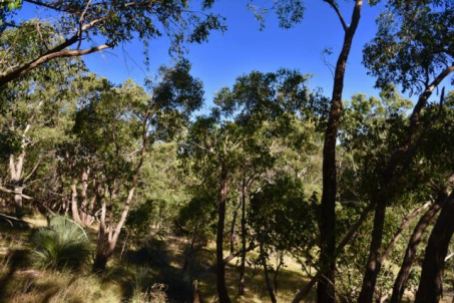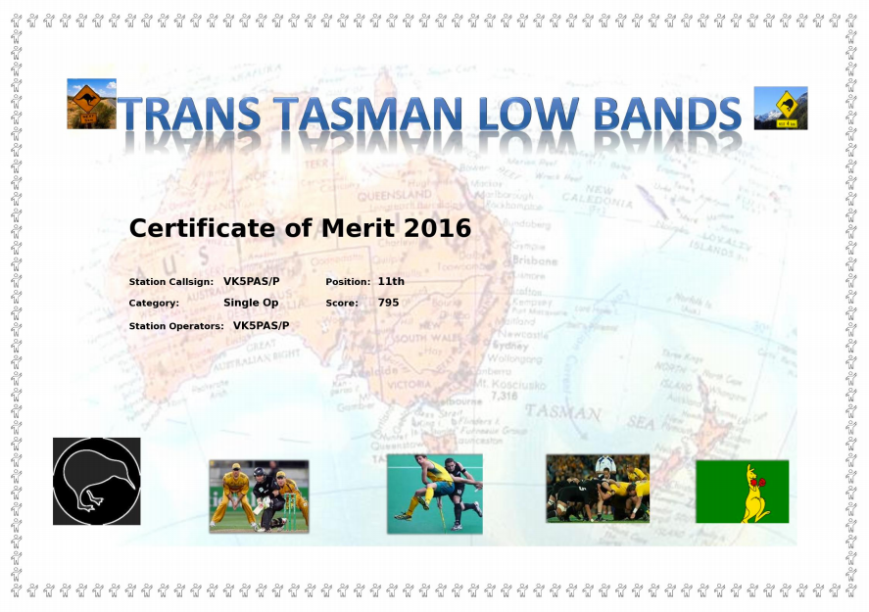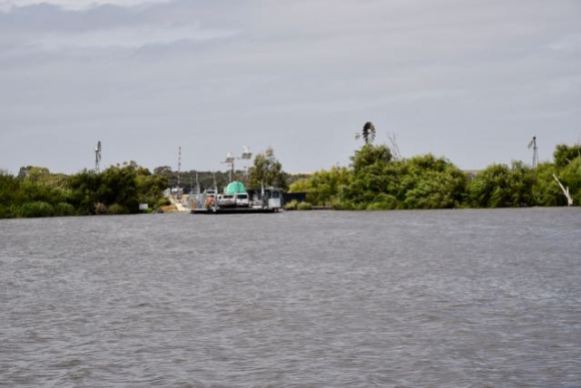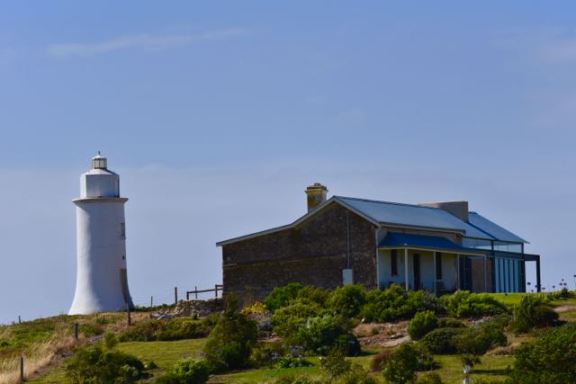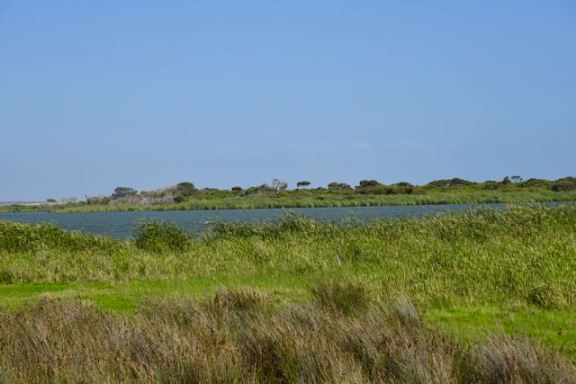It was another Friday afternoon and time for another Friday afternoon/evening session for the VK5 National and Conservation Parks Award. For the past couple of years, a small group of South Australian amateurs have headed out into the field on each Friday afternoon and into the evening, to promote the award. So yesterday (Friday 13th January 2016) I headed south and activated the Salt Lagoon Islands Conservation Park 5CP-203 and VKFF-1092. The park is located about 110 km south of Adelaide (by road) and about 14 km south west of the little town of Narrung.
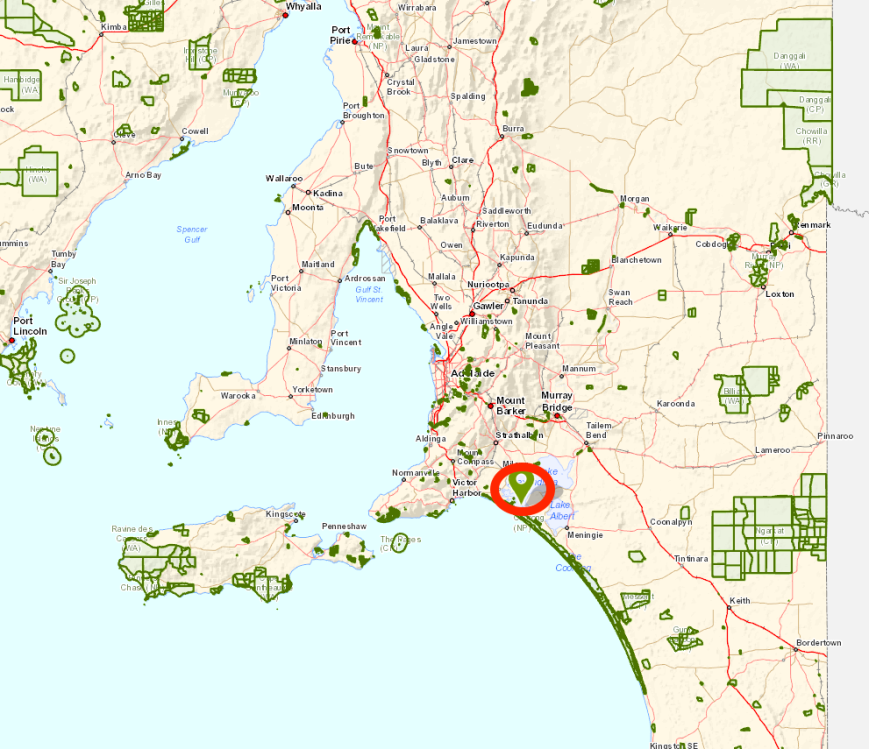
Above:- Map showing the location of the Salt Island Lagoons Conservation Park, south east of Adelaide. Map courtesy of Location SA Map Viewer.
Last year my wife Marija VK5FMAZ and I headed down south in the hope that we could activate this park via Pelican Point Road, but sadly access was an issue and we were unable to do so. In the interim I have been so busy on WIA issues and other commitments, that I hadn’t progressed any further enquiries regarding access. But in the last few days I was able to speak with the land owner, Mr. David Harvey, who kindly allowed me to access the park via his property. The only other way into the park is via boat.
This was to be a unique park for me as an activator, and the very first time that Salt Lagoon Islands Conservation Park had been activated.
Salt Lagoon Islands Conservation Park is located at the south east extent of Lake Alexandrina which is a large freshwater ephermal lake. Lake Alexandrina adjoins the smaller Lake Albert, and together they are known as the Lower Lakes. Lake Albert was named after Prince Albert, the Consort of Queen Victoria, by Governor George Gawler. Lake Alexandrina was named after Princess Alexandrina, niece and successor of King William IV of Great Britain and Ireland.
The park comprises two islands and some adjoining waters. These two small islands are one of the main breeding sites for a number of the larger water birds in South Australia. Species known to breed there include two species of spoonbill, three species of egret, four species of cormorant, three species of ibis and the Nankeen night heron.

Above:- Aerial shot showing the location of the park. Image courtesy of Location SA Map Viewer.
This is Tiger snake and Red-bellied Black snake country, so I made as much noise as possible whilst setting up, hoping that any that were in the area slithered away from my operating spot. Tiger snakes are extremely dangerous to humans, with its venom being strongly neurotoxic and coagulant. The Red-belliwed Black’s venom has predominantly anticoagulant and myotoxic effects.
Above:- Tiger snake (left) & Red bellied Black snake (right). Images courtesy of wikipedia
There are two main ways to get down to the park from my home. The first is via the South Eastern Freeway, down past Murray Bridge and on to Tailem Bend and then to Meningie. Or via Langorne Creek, Wellington and Narrung. This is the more picturesque of the two drives and the one I chose. It took me down through the wine growing region of Langhorne Creek and then on to Wellington.

Vineyards at Langhorne Creek

Old German wagon at Langhorne Creek

One of my favourite wineries, Bleasdale
After leaving Langhorne Creek I travelled east on theLanghorne Creek-Wellington Road, passing the Tolderol Game Reserve VKFF-1752 and the turn off to the Ferries McDonald Conservation Park VKFF-0881. I soon reached the little town of Wellington which is situated on the banks of the mighty Murray River. It is just upstream from where the Murray empties into Lake Alexandrina.
Wellington was the original crossing of the Murray River for people, livestock, and goods travelling overland between Melbourne and Adelaide, until a bridge was built in 1879 at nearby Murray Bridge. During the years 1852-1853, gold was escorted through this are by South Australia Police troopers from the Victorian gold fields, and there is a plaque here to commemorate that. You can also view the original bell which was used to summon the ferry. The impressive old Wellington courhouse, dating back to the 1840’s, is now a cafe and museum.
I boarded the ferry and crossed the Murray River. The ferry was absolutely brim full, and I noticed a lot of interstate number plates on the vehicles, so tourism appears to be doing well down in this area.
After crossing the Murray River on the ferry I drove south on the Princes Highway towards the town of Meningie. Rather than continuing on to Meningie, I turned right onto Pottalloch Road and followed the southern border of Lake Alexandrina. There are some great views to be enjoyed of the lake along this drive.
I also drove passed the Point Malcolm lighthouse which is Australia’s only inland lighthouse, and also believed to be the only inland lighthouse in the Southern Hemisphere. The lighthouse was built in 1878 on the eastern side of the narrows between Lake Alexandrina and Lake Albert. It was last operated in 1931 due to a decline in river traffic.
I crossed the ferry and entered the little town of Narrung, which was established in 1907. Narrung is local aboriginal language for ‘place of big sheoaks’. It was pleasing to see a lot of caravaners camping along the banks of the lake.
I left Narung and travelled south on Loveday Bay Road until I reached Mark Point Road. I then travelled south until I reached Pelican Point Road. The very impressive Coorong National Park was now directly in front of me. The Coorong is a 130 km stretch of saltwater lagoons protected from the Southern Ocean by sweeping sand dunes. The Coorong is a wetland of international importance, and supports many significant and endangered flora and fauna.
I then travelled a few km along Pelican Point Road until I reached a set of unlocked double gates. This is where I needed to enter to access the park. Please remember, this is is PRIVATE PROPERTY!. DO NOT access the land unless you have the specific permission of the landowner. I followed a track around the western edge of the lagoon, enjoying the scenery and wildlife, including numerous Western Grey kangaroos and various birdlife.
Once I got around to the northern side of the lagoons, the lagoons themselves came into view. Access to the water’s edge was not possible as the soil was very boggy to walk on.
I was very cognisant of snakes so I found an area where the grass wasn’t too tall, and a few metres from the reeds and the water. I set up the fold up table, deck chair, and used the Yaesu FT-857d set at 40 watts output, and the 80/40/20m linked dipole supported on the 7 metre squid pole. It was quite a nice sunny afternoon but there was a very strong southerly blowing directly off the nearby Southern Ocean, and the squid pole certainly had a huge flex in it. Sadly, the band was also a little noisy, with some loud static crashes.

Above:- Aerial shot of the park showing my operating position. Image courtesy of Location SA Map Viewer.
I was a little late from my posted activation time, as I had stopped off along the way to take a few photos. In fact I was around one hour late, but that did not seem to deter the park hunters. I called CQ on 7.144 and it did not take long for a mini pile up to ensure, with park hunters wanting to log a unique park. Mike VK5FMWW was my first station logged, followed by Steve and then Marc VK3OHM/p who was activating the Port Campbell National Park VKFF-0420.
I continued to work through the pile up, asking at one point for portable, mobile, and QRP stations, to give them a chance through the calls of the higher powered stations. This included logging Rob VK4FFAB/p who was activating the Bunyaville Conservation Park VKFF-1493. I also worked Phil VK6ADF/p who was in the Yarra Yarra Lake Conservation Park.
I worked a total of 36 stations on 40m from VK2, VK3, VK4, VK5, VK6, and VK7, before QSYing to 14.310 on the 20m band. My first caller there was Gary VK5ZK at nearby Goolwa who had a good 5/8 signal on ground wave no doubt. The 20m band was open to Victoria and I logged Peter VK3PF, Ian VK3AXF, Peter VK3TKK/p and Joe VK3MAB. I also logged another Park to Park contact with Phil VK6ADF/p in the Yarra Yarra Lake Conservation Park.
Sadly there was no opening to Europe for me on the long path and no DX was logged, other than Ken ZL4KD, the ZLFF co-ordinator. Prior to heading off to 80m I tuned across the 20m and heard very little activity, certainly no Europe. There were a few weak JA stations and also a BG8 from China who was calling CQ. I gave him a shout, but unfortunately he was unable to hear me.
I then moved to 3.60 on the 80m band and worked a total of 9 stations amongst the very loud static crashes, which made it particularly difficult at times. The first station logged on 80m was the every reliable Adrian VK5FANA on the Yorke Peninsula with a very strong 5/9 ++ signal. States worked on 80m were VK2, VK3, VK4, and VK5. I even worked Rick VK4RF/VK4HA who was a good 5/7 signal.
I then lowered the squid pole and erected the 15m dipole and called CQ on 21.244. I believe Mick VK3GGG called me and I heard a 4/1 signal report, but sadly I was not able to be heard well enough at the other end for it to be a valid contact. I called CQ for around 10 minutes on 15m, but had no takers. Despite this, it was quite enjoyable sitting back admiring the view, and watching the many waterbirds flying overhead, including Ibis, Cormorants, and Pelican.
I moved back to 40m with the local time now approaching 8.00 p.m. I hadn’t really planned on being out this late, but was it was approaching 0930 UTC I decided to stick around and book into the 7130 DX Net.
I headed to 7.130 and had asked if the frequency was in use, with no response, and I had just self spotted myself on that frequency on parksnpeaks. When a JA8 started calling CQ. Mal VK5MJ the Net Control of the 7130 DX Net then called in and due to the frequency being occupied, the net was moved up to 7.135. I worked a total of 12 stations on the net including William FO5JV in French Polynesia (5/8 sent and 5/2 received), and Bill W1OW in Massachusetts USA ((5/7 sent and 4/5 received). I was pleased to make contact with Bill as he is an avid park hunter.
Other good contacts on the net including a QSO with Damien VK5FDEC who was running QRP (1/2 watt). Damien was a good 5/8 signal to Salt Lagoon Islands. I also made contact with Tim VK8LLA in Darwin.
After a few rounds on the net I moved up the band to 7.146. It was starting to get dark and I wanted to be out of the park before it was pitch black, as I did not want to get lost. I logged a further 18 stations from VK2, VK3, VK5, VK7, and VK8. This included Greg VK8GM in Alice Springs.
So after 3 and 1/2 hours in the park I had a total of 88 contacts in the log. Of those, 65 were on 40m, 14 on 20m, and 9 on the 80m band. I safely manouevered my way out of the park and headed back home. This time I drove back into Meningie, and then on to Tailem Bend, and along the South Eastern Freeway to home. Below is a map showing my route for the day.

Above:- Map showing my route for the day. Map courtesy of plotaroute.com
I worked the following stations on 40m SSB:-
- VK5FMWW
- VK5FVSV
- VK4KUS
- VK3OHM/p (Port Campbell National Park VKFF-0420)
- VK4HNS/p
- VK4FRAL
- VK3PF
- VK5EE
- VK5KLV
- VK3ARH
- VK7AN
- VK4RF
- VK4HA
- VK2IO
- VK4FFAB/p (Bunyaville Conservation Park VKFF-1493)
- VK5ZK
- VK3FORD
- VK3FBAA
- VK4GSF
- VK3GGG
- VK3PMG
- VK7BC
- VK5HS
- VK6MB
- VK2YK
- VK3FEVT
- VK6ADF/p (Yarra Yarra Lake Conservation Park VKFF-1443)
- VK6BSAm
- VK3FPWH
- VK3NAL
- VK5FRSM
- VK5PL
- VK7VZ/p
- VK5FANA
- VK5FAKV
- VK3AXF
- VK5MJ
- VK3OB
- FO5JV
- VK5ML
- VK2SK
- VK7VEK
- W1OW
- VK5FDEC
- VK8LLA
- VK2XRC
- VK5AFZ
- VK3FLCS
- VK6NTE
- VK7FRJG
- VK3RU
- VK3FSPG
- VK3MPR
- VK5NFT
- VK3FCMC
- VK8GM
- VK3MIJ
- VK2JNG/p
- VK5DO
- VK2EMI
- VK5DC
- VK3SOT
- VK2QK
- VK5ND
- VK3FPHG
I worked the following stations on 20m SSB:-
- VK5ZK
- VK6NU
- VK3PF
- VK6ADF/p (Yarra Yarra Lake Conservation Park VKFF-1443)
- VK4RF
- VK4HA
- VK3AXF
- VK2YK
- VK6XN
- VK3TKK/p
- VK7DW
- ZL4KD
- VK6MB
- VK3MAB
I worked the following stations on 80m SSB:-
- VK5FANA
- VK4RF
- VK4HA
- VK5BJE
- VK3GGG
- VK3PMG
- VK2PDW
- VK2YK
- VK2VU
References.
Australian Museum, 2017, <http://australianmuseum.net.au/tiger-snake>, viewed 12th January 2017
Australian Museum, 2017, <http://australianmuseum.net.au/red-bellied-black-snake>, viewed 12th January 2017
Coorong Country, 2017, <http://coorongcountry.com.au/narrung/>, viewed 14th January 2017
Lighthouse of South Australia, 2017, <http://www.lighthouses.org.au/lights/SA/Point%20Malcolm/Point%20Malcolm.htm>, viewed 14th January 2017
National Parks South Australia, 2017, <http://www.environment.sa.gov.au/parks/Find_a_Park/Browse_by_region/Limestone_Coast/coorong-national-park>, viewed 14th January 2017
Wikipedia, 2017, <https://en.wikipedia.org/wiki/Lake_Alexandrina_(South_Australia)>, viewed 12th January 2017































